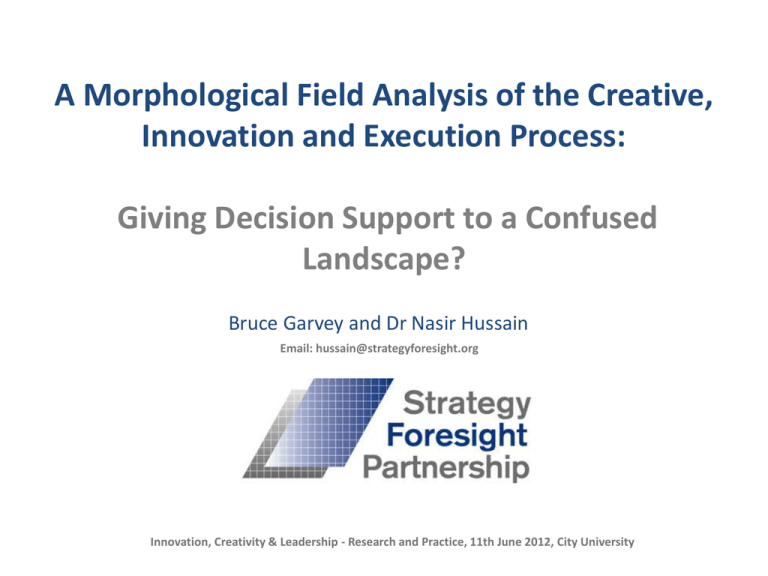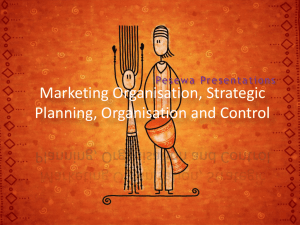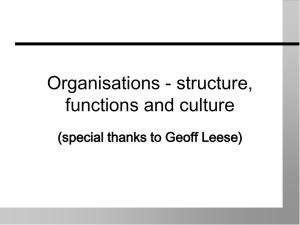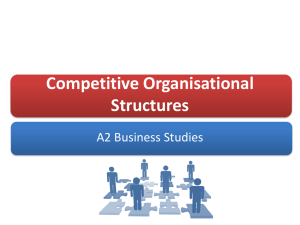A Morphological Field Analysis of the Creative, Innovation and Execution Process: Landscape?
advertisement

A Morphological Field Analysis of the Creative, Innovation and Execution Process: Giving Decision Support to a Confused Landscape? Bruce Garvey and Dr Nasir Hussain Email: hussain@strategyforesight.org Innovation, Creativity & Leadership - Research and Practice, 11th June 2012, City University What’s the Problem? Innovation Creativity Innovation Execution How does this on-going problem open up new research vistas? Creativity Execution Uncertainty Qualitative Risk Hybrid Quantitative The landscape of decision support and problem-structuring methods Decision Support Modelling is application of scientific modelling methods for the study and management of complex systems Involves the construction scenarios & futures projections to test strategies, policies, systems or organisational structures. Problem Structuring Methods are a family of methods that apply modelling approaches to address ‘wicked problems’ faced by senior executives, strategists and planners of organisations. They seek to alleviate or improve situations characterised by high uncertainty, conflict and complexity. It’s better to be approximately right than precisely wrong….. “One of the greatest mistakes that can be made when dealing with a mess is to carve off part of the mess, treat it as a problem and then solve it as a puzzle -- ignoring its links with other aspects of the mess.” Michael Pidd, Tools for Thinking Analysing a confused landscape... Domain Area of management Analytical category Type of analysis Creativity Strategic Frameworks Qualitative Innovation Tactical Tools, aids, devices Quantitative Execution Operational Processes Hybrid How many combinations are there? The organisational context Organisational responsibility Organisational culture (Tharp) Cultural dimensions (Hofstede) Chairman / Board Control (hierarchy) Power distance CEO / C-level Collaborate (clan) Individualism Cross-functional project team Functional departments Individuals Create (adhocracy) Compete (market) Masculinity / Femininity Uncertainty avoidance Long-term orientation Organisational structure (Mintzberg) Vertical & horizontal centralisation Limited horizontal decentralisation Horizontal centralisation Limited vertical decentralisation Selected decentralisation Decentralisation Any Linking the internal and contextual perspectives Strategic Analytical category Frameworks Type of analysis Qualitative Innovation Tactical Tools, aids, devices Quantitative Execution Operational Processes Hybrid Domain Area of management Creativity Organisational responsibility Organisational culture (Tharp) Cultural dimensions (Hofstede) Chairman / Board Control (hierarchy) Power distance CEO / C-level Collaborate (clan) Individualism Cross-functional project team Functional departments Individuals Create (adhocracy) Compete (market) Masculinity / Femininity Uncertainty avoidance Long-term orientation Organisational structure (Mintzberg) Vertical & horizontal centralisation Limited horizontal decentralisation Horizontal centralisation Limited vertical decentralisation Selected decentralisation Decentralisation Any An example of an inference model Implications for further research Presented a two-stage research programme Phase 1: Explore the variety of decision support methods within CIE domain Phase 2: Research into creating an integrated model adaptable to practitioners from different CIE sectors External environment i.e. ‘what if’ Decision fields i.e. ‘looking through the right lens’ Strategic vision i.e. internal ‘values’ Take home messages 1. Analysed the vast landscape of decision support models 2. Highlighted the organisational context within which to use the most optimal mix of decision support models 3. Demonstrated a live example of how General Morphological Analysis can operate as an inference model 4. Outlined a research programme that will have benefits for practitioners 5. Further material available at www.strategyforesight.org





